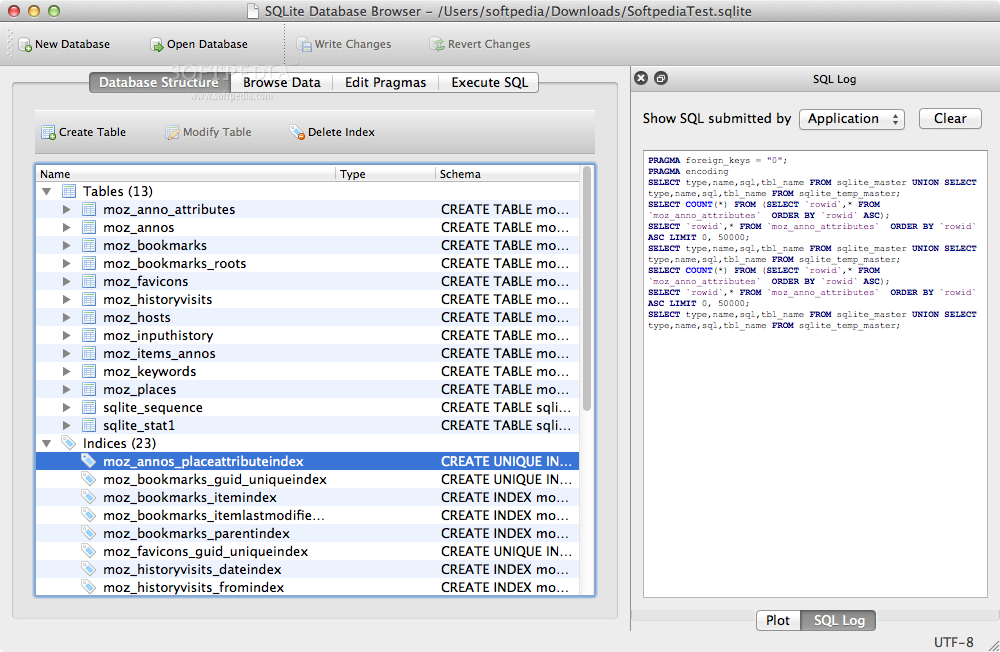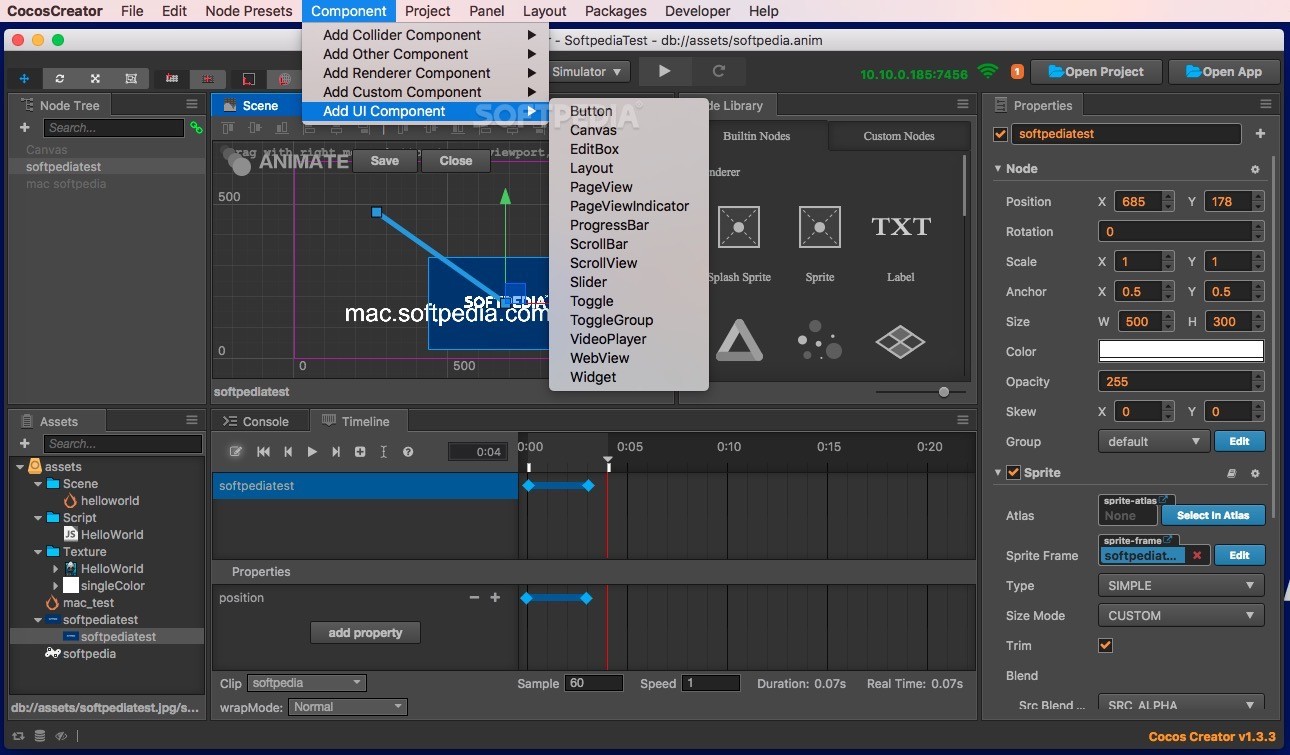

- #Sqlite browser mac os x mac os x#
- #Sqlite browser mac os x install#
- #Sqlite browser mac os x windows#
#Sqlite browser mac os x mac os x#
See the official Installing MySQL on Mac OS X instructions here.
#Sqlite browser mac os x install#
The main drawback of course is that Sequel Pro is only available for OS X.Īnother drawback for novice users is that Sequel Pro uses MySQL, which means you'll have to first install the MySQL software yourself…which can be easy or very hard, depending on your situation. It has the nice look-and-feel of a modern, native OS X app because it is one. If you have a Mac, then the Sequel Pro client is hands-down the best client to use when interfacing with a MySQL database. The sacrifice you make is having a more spartan of an interface. If all else fails, install the Firefox browser, then the SQLite Manager plugin. But you may have problems installing MySQL itself.
#Sqlite browser mac os x windows#
Windows and Linux have their own MySQL clients, including HeidiSQL. To sum up the descriptions below: If you're on Mac OS X, try to use Sequel Pro, which sits atop the MySQL software. GUIs) mentioned here make it so that working with databases have some of the conveniences of working with spreadsheets. However, with MySQL, you typically have to install MySQL yourself, which is typically not as easy as installing Firefox. But the graphical user interface for SQLite is not as nice as some of the GUIs available for MySQL.

Getting SQLite on your computer can be as easy as installing the Firefox Browser, which comes packaged with SQLite. Sequel Pro for MySQL, and SQLite Manager for SQLite)Ī quick technical aside: Why am I recommending either SQLite or MySQL? Because both have their tradeoffs in terms of installing it on your computer. SQLite and MySQL refer to the database software itself, not the graphical user interfaces that we'll be using to work with the databases (e.g. For the scope of our work, they will basically be interchangeable because they are both very similar. SQLite and MySQL are two different database systems that use two different variants of SQL. When you write SQL to do data work, you are programming. SQL, SQLite, and MySQLįirst, some terminology: SQL stands for Structured Query Language, which is a type of programming language used in working with databases. They are by no means the only ones, I recommend them because they work well and are free. This is a quick guide to the interface for the 2 graphical user interfaces recommended for our initial foray into SQL databases. suggests using vCard import/export, and that is certainly a workaround.An introduction to using SQL with a GUI client Note that while I'm able to get existing Contacts data in these tables, I haven't found anyway to have Contacts take up any subsequent edits to the sqlite database. LEFT JOIN ZABCDNOTE ON ZABCDNOTE.ZCONTACT = ZABCDRECORD.Z_PK LEFT JOIN ZABCDEMAILADDRESS ON ZABCDEMAILADDRESS.ZOWNER = ZABCDRECORD.Z_PK The name of the other tables' attributes which allow them to be joined varies, eg: LEFT JOIN ZABCDPOSTALADDRESS ON ZABCDPOSTALADDRESS.ZOWNER = ZABCDRECORD.Z_PK

Second, the biggest hassle i had was figuring out the data model used in this database.

db suffix before i could get my sqlite DB browser (Version 3.8.0) to recognize it as a SQLite database, even though sqlite3 could open it from the command line. This is following up on this previous useful answer I'd have left a comment there if i had the rep(: In case you have the same questions i did:įirst, i had to rename AddressBook-v22.abcddb to end with a.


 0 kommentar(er)
0 kommentar(er)
